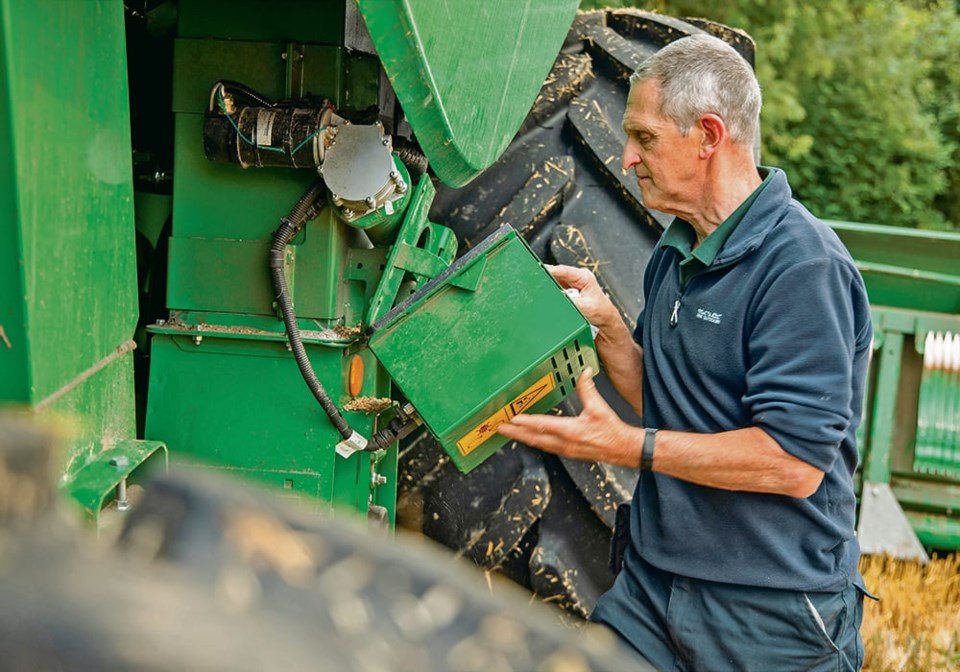WESTERN PRODUCER — John Deere’s HarvestLab 3000 sensor is now available as a retrofit for 2018 and newer John Deere S700 series combines.
The system uses near-infrared-reflectance technology, and it’s already available in Deer’s forage harvesters, for manure sensing on liquid manure applicators, and as a standalone product.
For combines, HarvestLab will monitor harvested grain and allow growers to crank up the resolution of their harvest maps, with protein, starch and oil values accessible to operators on the fly.
So far, the system can be used for wheat, barley and canola, and more crops will be added.
Christopher Murray, go-to-market manager at John Deere, said the site-specific data is available to the combine operator on the Generation 4 Display, as well as automatically uploaded into the John Deere Operations Center with JDLink.
“The protein, whether it’s high, average or low, you can correlate that to nitrogen removal off the field. Working with third-party software companies like PCT Agcloud, they can generate a nitrogen removal map,” Murray said.
“You can take three different maps in the ops center, you can see your yield, your protein and then your nitrogen removal. Then farmers can create a prescription for nitrogen application for that next year.”
If the combine is working in an area with poor cellular service, the harvest data is stored in the cab and can be transferred with a memory stick to a computer and then uploaded to Deere’s operations centre.
Murray said growers can use the maps to reduce their nitrogen inputs by not over-applying in areas where it won’t provide a response or shift inputs to where they will provide a better return.
“If input costs are really high, how do I reduce the amount of nitrogen input, for instance, to have the best output? Maybe it’s not the highest yield, maybe it’s higher protein that’s going to pay me more than what the yield will. They can absolutely overlay that and ground truth it year over year,’ Murray said.
“They (farmers) can lower their input costs anywhere from $5 to $15 per acre and save themselves money, just with the tools that are in John Deere Operation Center.”
The system can also be used to verify that nitrogen is being used efficiently for sustainability programs.
HarvestLab 3000 can help growers identify and then segregate crop during harvest into different grades that can be stored and marketed separately.
“They (farmers) can see this high protein for instance in wheat, or high oil in canola. They can separate that grain right in the field and they can market that to an elevator that’s paying a price premium,” Murray said.
“In the trials that we’ve done we’ve seen where customers can see upwards of 29 cents per bushel in revenue increase over average protein levels — for instance, where elevators are paying that price premium for high protein wheat.”
The HarvestLab 3000 grain sensor uses the same near-infrared sensor technology used by most nutrition labs but produces results instantly and with more than 4000 readings per second.
The sensor is attached to the clean grain elevator on the combine, and a motor-driven auger pushes grain in front of the near-infrared sensor as the combine moves through the field.
Murray said HarvestLab 3000 attaches in slightly different areas on the clean grain elevator, depending on which series of S700 series combine it’s installed on.
Pricing and installation are available through Deere dealers.

